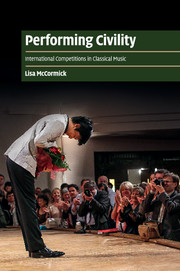Book contents
- Performing Civility
- Cambridge Cultural Social Studies
- Frontispiece
- Performing Civility
- Copyright page
- Contents
- Figures
- Tables
- Acknowledgements
- Introduction
- 1 The rise and near demise of the international music competition
- 2 Competitions enter the civil sphere
- 3 Narrating the competition
- 4 The presentation of musical self
- 5 Producing sound judgments
- 6 Voicing opinions
- Conclusion
- Appendix A Selected competitions: facts and figures1
- Appendix B Membership of the World Federation of International Music Competitions (WFIMC), 1957–2012
- Appendix C Putting the “performance perspective” in perspective
- References
- Index
- Other books in the series (continued from page ii)
- References
References
Published online by Cambridge University Press: 05 October 2015
- Performing Civility
- Cambridge Cultural Social Studies
- Frontispiece
- Performing Civility
- Copyright page
- Contents
- Figures
- Tables
- Acknowledgements
- Introduction
- 1 The rise and near demise of the international music competition
- 2 Competitions enter the civil sphere
- 3 Narrating the competition
- 4 The presentation of musical self
- 5 Producing sound judgments
- 6 Voicing opinions
- Conclusion
- Appendix A Selected competitions: facts and figures1
- Appendix B Membership of the World Federation of International Music Competitions (WFIMC), 1957–2012
- Appendix C Putting the “performance perspective” in perspective
- References
- Index
- Other books in the series (continued from page ii)
- References
- Type
- Chapter
- Information
- Performing CivilityInternational Competitions in Classical Music, pp. 264 - 281Publisher: Cambridge University PressPrint publication year: 2015



